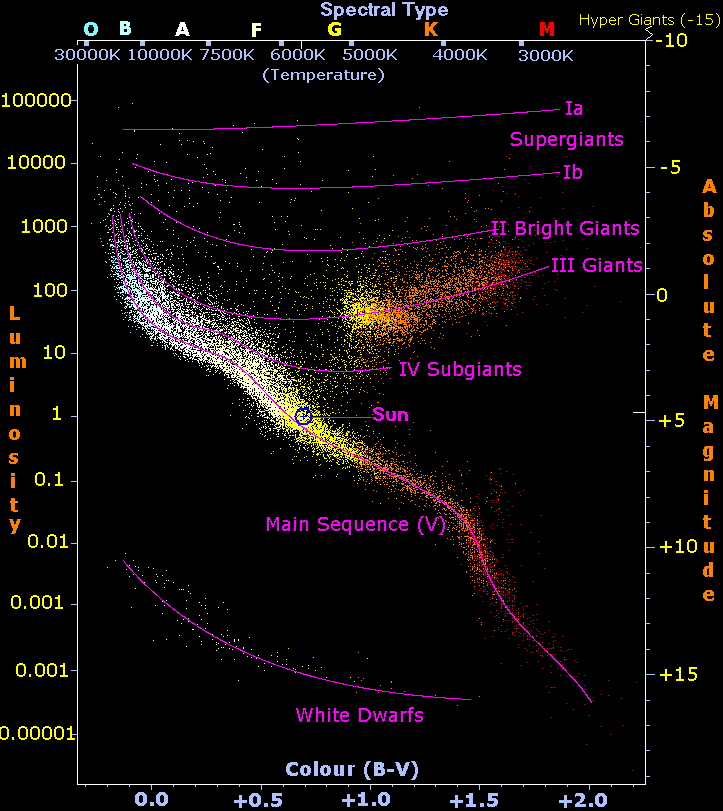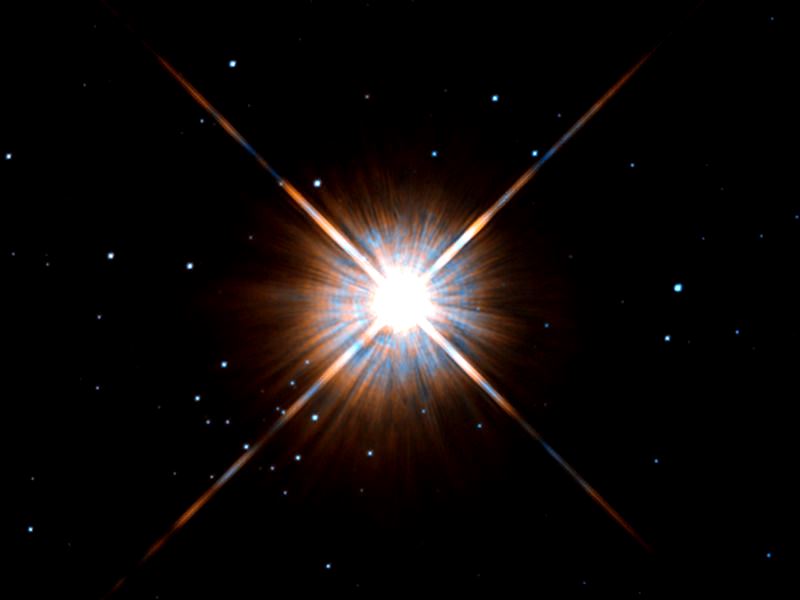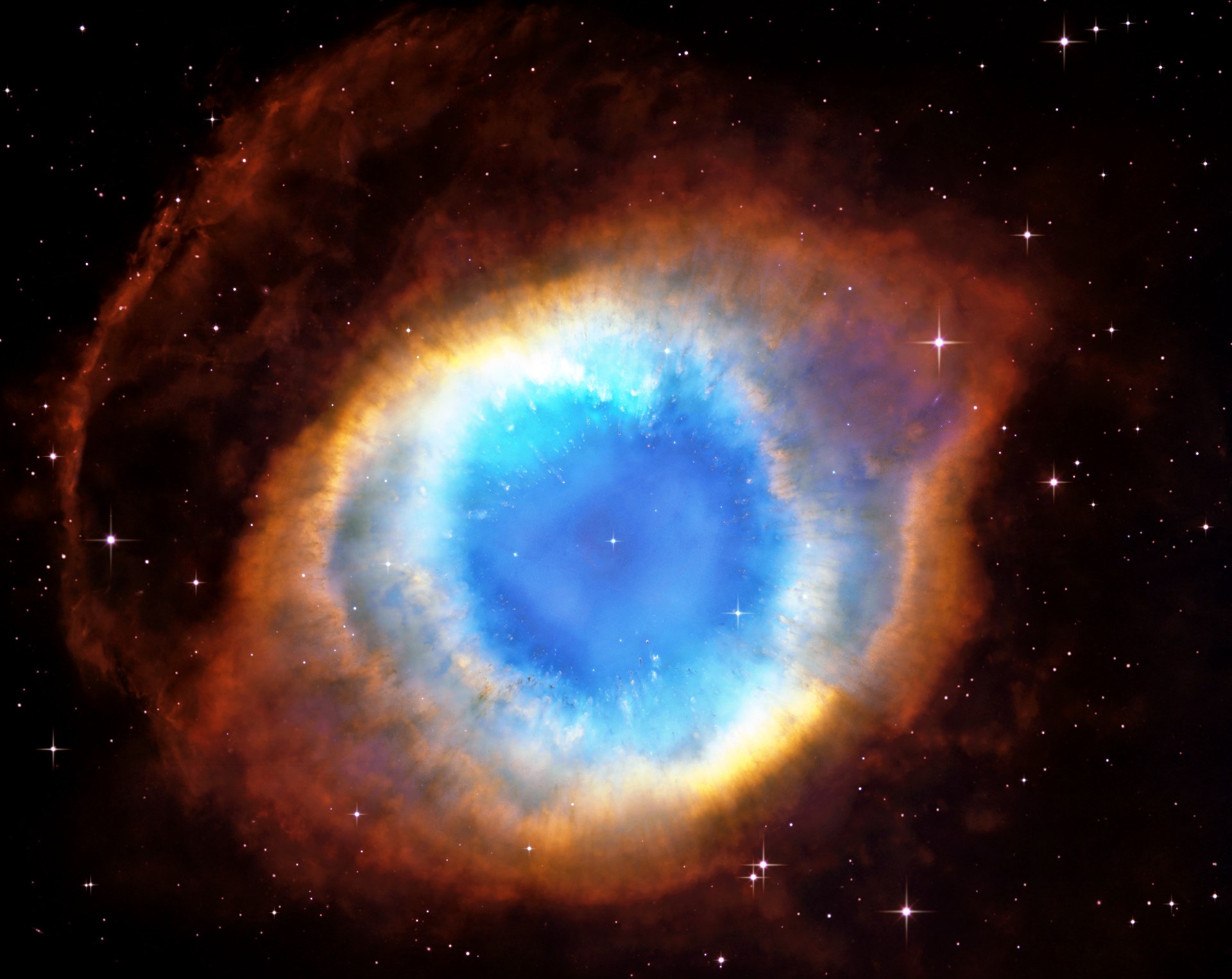The Life and Death of a Star
On the preceding pages, we considered the earliest stages of God’s creative work. He brought the universe into existence in a brilliant flash of energy, then stretched out the heavens to cool the blazing conflagration into hydrogen gas, and finally used gravity to shape hydrogen gas into stars and galaxies. That was just the beginning of His creativity, however. As we’ll see in what follows, the stars played an important role in God’s providential plan to create a habitat for life. Biological life requires a planetary home and a diversity of chemical elements, neither of which were available in the early universe. (As you may recall from earlier in this chapter, the period of nucleosynthesis that occurred shortly after the Big Bang did not last long enough to convert much hydrogen into heavier elements.) To understand the processes God ordained to prepare a home for living creatures, we must examine what happens when stars grow old and die.
Young stars are powered by the nuclear fusion of hydrogen, which is slowly converted to helium through a process called hydrogen burning. The hydrogen isn’t really burning in the ordinary sense, of course. The process called “hydrogen burning” isn’t a chemical reaction; it is a complex series of nuclear reactions and radioactive decay processes, as we saw in chapter 5:
22He → 21H + e+ + γ
21H + 11H → 32He + γ
32He + 32He → 42He + 11H + 11H
Initially, hydrogen burning occurs near the center of the star, where the pressure and temperature are greatest. Radiation and convection currents carry heat to the surface, where the plasma cools slightly as it releases energy in the form of light. Stars in this early phase of life are called main sequence stars because they lie along a curve called the “main sequence” in a Hertzsprung–Russell diagram—a chart that astronomers use to classify different types of stars. The main sequence phase of a star’s life takes a long time, typically billions of years. The sun has been burning for nearly five billion years and is barely halfway through its supply of hydrogen! Eventually, however, the hydrogen fuel is depleted. What happens next depends on the mass of the star.

A Hertzsprung-Russell diagram is used to classify different types of stars. The vertical axis represents luminosity (absolute brightness). The horizontal axis represents the color index (spectral class), which indicates a star’s surface temperature.The temperature of an object determines the colors of thermal radiation it emits, as we saw in chapter 2. Each dot on this graph represents a star whose luminosity and color index have been measured.
The mass of a star is often expressed in units called solar masses. One solar mass is equal to the mass of the sun, about 1.99 × 1030 kg. The least massive stars are red dwarfs, which range from about 0.01 to 0.5 solar masses—in other words, 1% to 50% the mass of the sun. Because red dwarfs have relatively little mass, their internal temperature and pressure are barely high enough to sustain nuclear fusion. The conversion of hydrogen to helium happens slowly, so slowly that a red dwarf star could last trillions of years without running out of fuel! No one knows for sure what happens to a red dwarf when it runs out of fuel, because that has never been observed: even the oldest red dwarfs still have plenty of hydrogen left.

The nearest star, Proxima Centauri, is a red dwarf. Though it is only four light-years away, it is too dim to see without a telescope. Red dwarfs are the most common stars in the galaxy, but not a single one is visible to the naked eye.
Slightly larger stars, like the sun, convert hydrogen to helium at a faster rate. Eventually, there is too little hydrogen in the core to sustain the fusion reaction. The outward pressure in the core diminishes as the nuclear furnace dies down, and the inward pull of gravity squeezes the core smaller. This compression raises the core’s temperature even hotter than it was during the main sequence phase, so hot that its heat ignites a new fusion reaction in a thin layer of hydrogen surrounding the helium core. The burst of energy from this hydrogen-burning layer, together with the additional heat from the collapsing core, causes the outermost layers of the star to balloon outward. A star in this stage is known as a red giant. When the sun becomes a red giant, it will swell so large that its surface will engulf the orbits of Mercury, Venus, and maybe even Earth! (Don’t panic. That won’t happen for another five billion years, and the earth was never intended to be our permanent home anyway.The Earth is not our permanent home, as Jesus explained (John 14), and there is some scriptural evidence that even the physical universe itself won’t last forever. See for instance Isaiah 34:4 and Revelation 6:14.)
At the end of the red giant phase, the increasingly dense core becomes hot enough to fuse helium into beryllium and then into carbon through a series of reactions called the triple-alpha process, so named because it transforms three alpha particles (helium-4 ions) into one carbon atom:
84Be + 42He → 126C
Some carbon atoms also fuse with helium to form oxygen; and if the star has enough mass, still heavier elements may be formed. These reactions happen quickly and release tremendous bursts of energy. The dying star begins to convulse and blasts away its outer layers, exposing the small but intensely hot core. Clouds of expelled gases expand outward from the star, driven further into space by stellar wind. The result is a small nebula called a planetary nebula. Planetary nebulae have nothing to do with actual planets, but they looked like planets to the astronomers who first observed them through low-powered telescopes in the eighteenth century.
When the outer layers of the star have dissipated into space, only the bare core remains. At this stage, the star is called a white dwarf. A white dwarf is a million times smaller (by volume) than the sun—about the size of Earth—yet it is so densely compressed that it can weigh up to 1.4 solar masses. The star is “dead” in the sense that all of the nuclear reactions have run their course, yet it continues to shine for millions or billions of years as energy from the leftover heat gradually radiates away.

That’s the typical fate of a star between 0.5 and 8 solar masses: they throw off their outer layers at the end of the red giant phase, then slowly fade out as white dwarfs. Stars heavier than eight solar masses do something a little more dramatic: they tend to explode before reaching the white dwarf stage! White dwarf stars can also explode under certain conditions. Both types of explosions produce the heavier elements needed to make the universe a suitable habitat for life, as we’ll see on the next page.